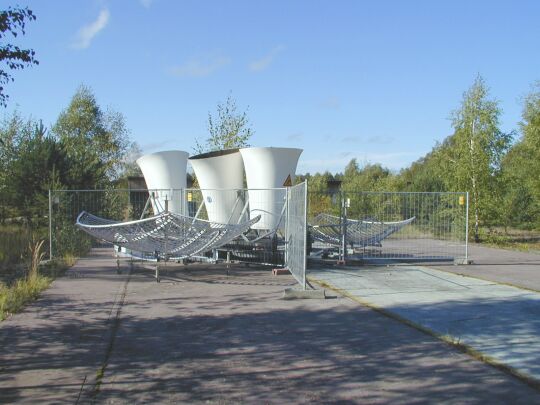|
|
SENSOR: PHASED ARRAY SODAR med RASS Option
482MHz and 1290MHz RASS-Extension
|
| Antenna | |
| Type: | Two parabolic panel parabolic reflectors, with Ø 1.8m |
| Feed: | One focal feed ea. |
| Beam Characteristics | |
| Beam Direction: | Vertical |
| Beam Control: | None |
| Polarization: | Linear |
b.) Transmitter/Receiver Characteristics
| Transmitter | |
| Frequency: | 1290 MHz |
| Modulation: | Continuous wave |
| RF-power: | 20 W approx. |
| Bandwidth: | Depends only to oscillator stability, approx. 10-5 |
| Receiver | |
| Frequency | 1290 MHz |
| Type: | Homodyne |
| Noise Figure: | < 1 dB |
| RF-Band Width: | < 5 MHz |
| IF-Center Frequency: | approx. 3 KHz |
| Accuracies: | |
| Virtual Temperature: | 0.3 °K |

In case that the customer wants to measure also the temperature profile as high as possible a RASS system based on 482 MHz technique could be considered. Such system has been developed recently by METEK on a contract of the Institute of Tropospheric Research Leipzig, Germany, and was successfully demonstrated on a measuring campaign of the national weather service of Germany in September 2000. This system should be combined with the bigger phase array antenna type DSDPA.90-64 in order to have comparable measuring heights for both profilers, it is not recommended in combination with DSDPA.90-24 due to the low required frequency.
a.) Design of Electromagnetic Antennas
| Antenna | |
| Type: | Two parabolic grid reflectors with Ø 3.80 m |
| Feed: | One focal feed ea. |
| Beam Characteristics | |
| Beam Direction: | Vertical |
| Beam Control: | None |
| Polarization: | Linear |
b.) Transmitter/Receiver Characteristics
| Transmitter | |
| Frequency: | 482 MHz |
| Modulation: | Continuous wave |
| RF-power: | 40 W approx. |
| Bandwidth: | Depends only to oscillator stability, approx. 10-5 |
| Receiver | |
| Frequency | 482 MHz |
| Type: | Homodyne |
| Noise Figure: | < 1 dB |
| RF-Band Width: | < 2 MHz |
| IF-Center Frequency: | approx. 1 KHz |
| Accuracies: | |
| Virtual Temperature: | 0.3 °K |
|
|